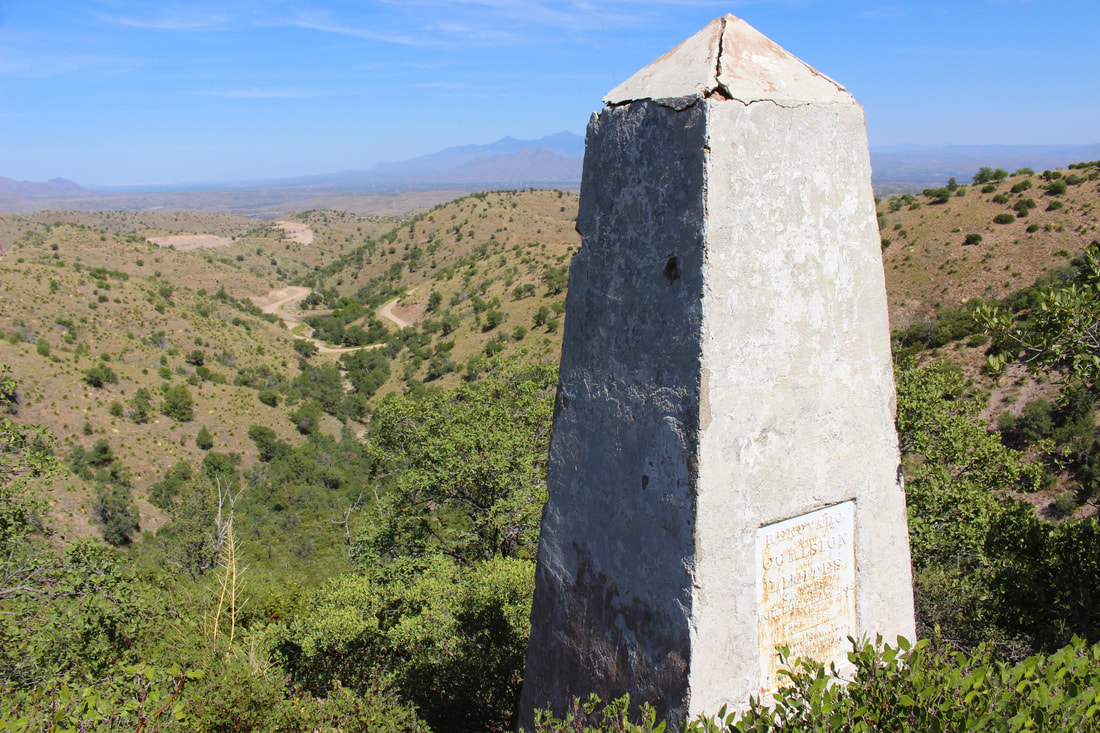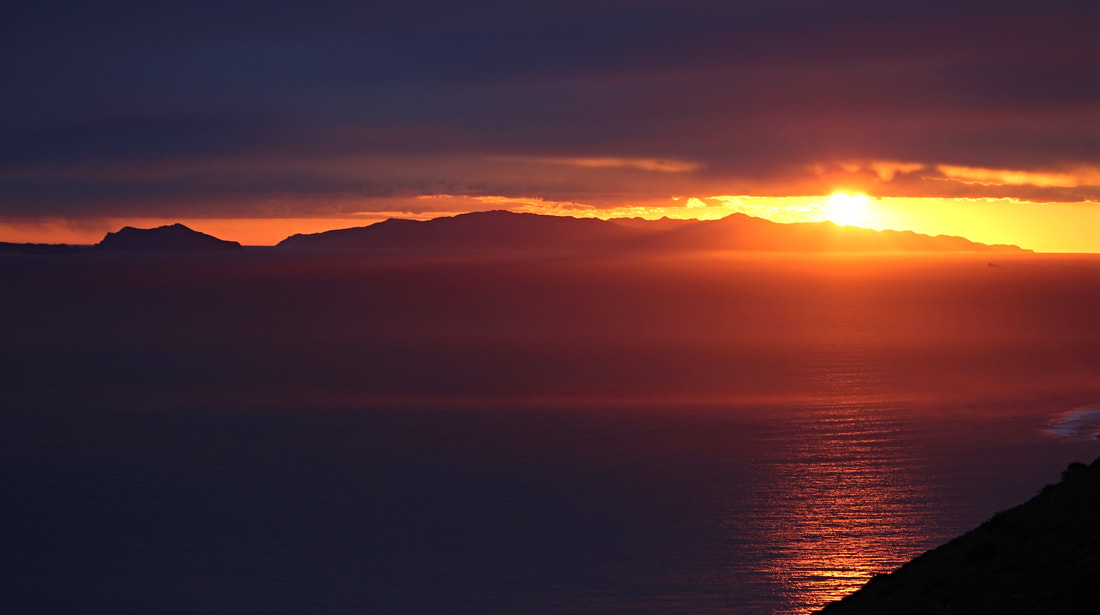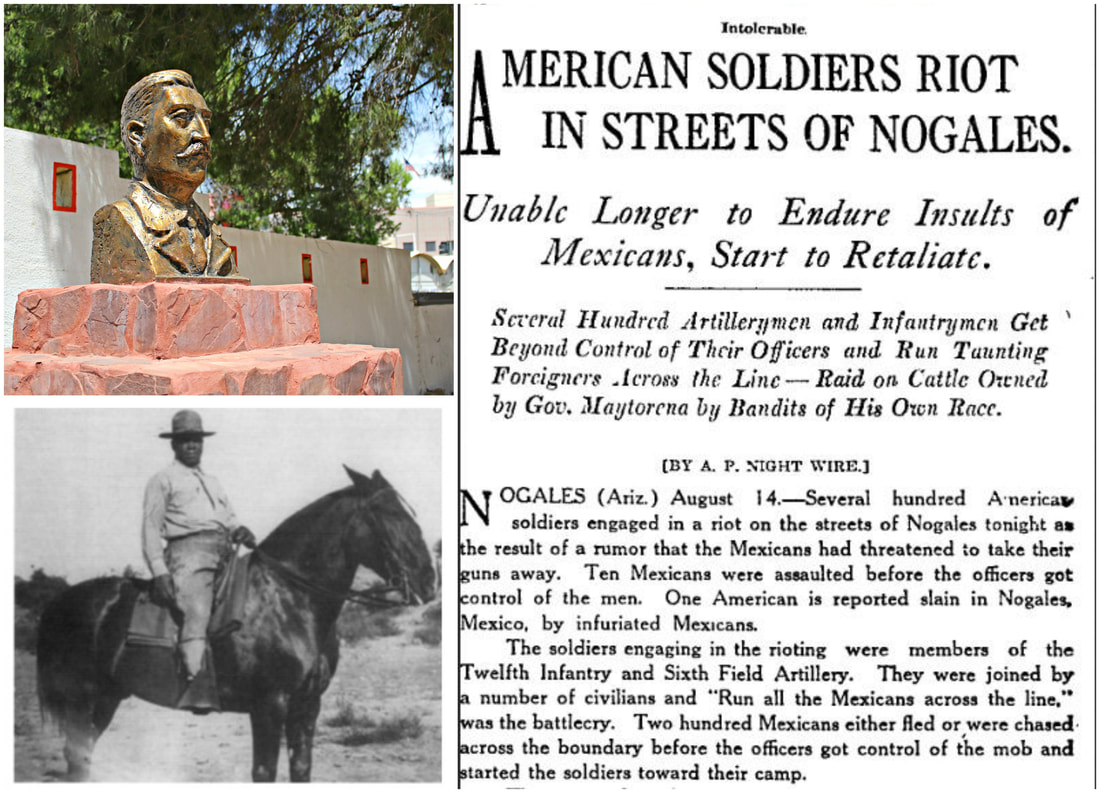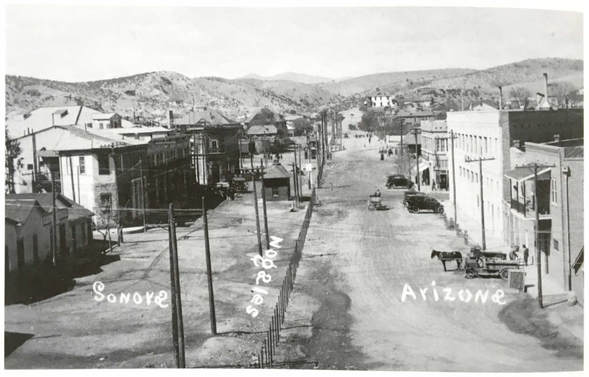Echoes from the Borderlands
Stories across countries, culture, and time along the U.S.-Mexican border region
The Chicano Moratorium 50 Years Later:
Retracing the Mexican American Struggle Against the Vietnam War
|
On August 29, 1970, East Los Angeles became the stage for one of the most captivating moments of the Vietnam War’s home front – the National Chicano Moratorium protests against the disproportionate loss of Mexican American servicemen in the war. The largest protest of the 1960s/1970s Chicano movement, nearly 20,000-30,000 people participated in the Moratorium. However, its message was muffled by violence between the Los Angeles Sheriff’s Department and demonstrators leading to 150 arrests and four deaths, including journalist Rubén Salazar. Retrace the route of the Chicano Moratorium through East Los Angeles and rediscover Mexican American protestors’ cries for racial justice: “Chale no, we won’t go – bring the ‘carnales’ home!”
|
Monumental Border Mistakes:
Boundary Monument 127 and the Arizona-Sonora Line
|
Nestled in the rough mountainous country west of the cities of Nogales, Arizona, and Nogales, Mexico, Boundary Monument 127 is a significant geographic turning point for the U.S.-Mexican border for marking the Arizona-Sonora diagonal boundary. However, the monument has been located on the WRONG spot since this part of the border was first surveyed in 1855.
Explore the full story of this 170-year-old incorrect border controversy which has shaped the history of Northwestern Mexico and Southern Arizona. |
Mexico's Lost Archipelago
|
In 1848 the Treaty of Guadalupe Hidalgo ended the U.S.-Mexico War and redrew the border between the two countries, formalizing Mexico’s loss of California and most of western North America to the United States. Completely overlooked in the Treaty’s definition of the U.S.-Mexican border on the Pacific coast was the status of the Channel Islands (or Archipelago of the North), an oil-rich island chain just beyond the Southern California coastline.
Are the oil-rich California Channel Islands rightfully Mexican soil (according to Article V of the Treaty of Guadalupe Hidalgo) or are they in fact Mexico’s “lost archipelago”? |
The August 27, 1918 Battle of Ambos Nogales
The Real Story of the Border War that led to the First U.S.-Mexican Border Fences (Part I)
|
In Part I, learn about Nogales Mayor Félix Peñaloza, the Buffalo Soldiers of the 10th Cavalry, and the forgotten racial violence of the U.S.-Mexican border in Nogales
|
The two cities of Nogales (in Arizona and in Sonora, Mexico) formed as a unique community linked by trade across a land border that was lightly controlled. By the late 1910s, however, the border in Nogales was a changed environment with rising racial tensions between Anglo Americans and Mexicans. In Part I, find out how the Mexican Revolution, World War I, and racial violence in Nogales led to combat between the U.S. Army and Mexican civilians on August 27, 1918.
|
The August 27, 1918 Battle of Ambos Nogales
The Real Story of the Border War that led to the First U.S.-Mexican Border Fences (Part II)
|
As a consequence of the violence before and during August 27, 1918, the two Nogales became the first cities anywhere on the Mexico-U.S. border to be divided by fences. In Part II, learn about the differences in the U.S. and Mexican memories of the battle and discover the full text of the "Corrido de Nogales."
|
After the loud sounds of rifle and machine-gun fire shook Ambos Nogales, representatives of the Mexican and U.S. governments met to investigate the battle and prevent further violence in these bordertowns. Discover the consequences of the battle, including the findings of the U.S. Army investigation of the fighting, the formation of different memories of the battle on the Mexican and U.S. sides, and the building of the first permanent border fence on the U.S.-Mexican border. The two Nogales became two cities forever divided by border fences after the August 27, 1918, battle.
|




